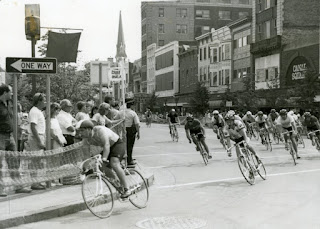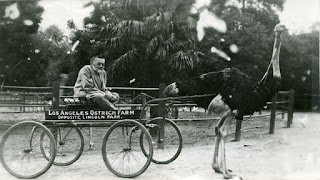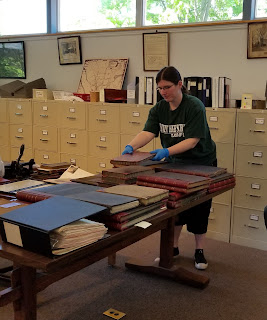This post was written by Schenectady City Historian, Chris Leonard.
Cookbooks are a fascinating if underutilized type of historical documentation. Not only do they cover what people ate and what foods were readily available, they delve into the state of trade and economics, the class of persons performing the cooking, and of those for whom the food is prepared. Class relations, gender roles, trade, the fashions of the day, and the evolution of language and etymology can all be discerned. And hey, you can even use the recipes if so inclined.
American Cookery by Amelia Simmons is a short work, just 49 pages, but provides a wealth of information in a snapshot of life in the 18th century America. First printed in Hartford, CT, in 1796, American Cookery was the first cookbook published in the United States. A second, larger printing occurred in Albany, NY, in the same year. As such, it is logical to think this work would have been present in Schenectady kitchens due to the proximity of the two towns, and because Schenectady was a part of Albany County at the time.
 |
American Cookery, or, The Art of Dressing Viands, Fish, Poultry, and Vegetables, Hartford: Hudson & Goodwin, 1796 - Library of Congress, Rare Book and Special Collections Division
|
Of Simmons, little is known. No biographical information exists aside from her description as “An American Orphan” on the book’s title page. Two hundred years of research has turned up nothing else.
On the title page of American Cookery, Simmons notes that the book is “Adapted to this country and all grades of life.” In essence, this is a very English cookbook, using English cooking methods. It is notable for its use of American food products. It contains that first known recipes for turkey (page 18) and corn (in this case, cornmeal) in Johny Cake or Hoe Cake (page 34).
It is also the first American work to mention potash and pearl ash as leavening agents, used similarly to how we use commercial baking powder. The inclusion of Dutch terms such as slaw and cookey is engaging and shows how these terms slipped into the common vernacular.
The Servant and American Society
Simmons’ claim on the title page that the cookbook is aimed at “all grades of life” is something of a puzzle, when read with the book’s preface. Here she notes:
"As this treatise is calculated for the improvement of the rising generation of Females in America, the Lady of fashion and fortune will not be displeased, if many hints are suggested for the more general knowledge of those females in this country, who by loss of their parents, or other unfortunate circumstances, are reduced to the necessity of going into families in the line of domestics, or taking refuge with their friends or relations, and doing those things which are essential to the perfecting them as good wives, and useful members of society.”
Aside from possibly being the longest sentence ever written, Simmons, in essence, contradicts her statement that the book is for all grades of life. Indeed, it is aimed at certain lower-class women who find or seek to find themselves in the employ of a family that cannot only afford servants but purchase the foodstuffs to prepare the fare within the work. She continues:
“It must ever remain a check upon the poor solitary orphan that while those females who have parents, or brothers, or riches, to defend their indiscretions, that the orphan must depend solely on character.”
As such, American Cookery also provides a sort of resume for the orphan or member of the lower-class seeking employment with a family. It informs the wealthy homeowner that opening one’s door to such foundlings is safe as these are women imbued with a singular American tradition and character.
American Cookery as a Cookbook
One should avoid looking at a cookbook through the lens of the current time. Yes, the prevalence of butter and sugar, and the lack of vegetables would be concerning to a cardiologist, but this information speaks to food availability, seasonality, and tradition.
Cooking in the late 18th century was seasonally focused, due to the lack of refrigeration. The higher fat and calorie count of the prepared foods were needed for a far more active populace. Even in cities, home gardens and farm animals were common, as the recipe for Syllabub on page 31 states, “…then milk your cow into the liquor…”
For this reason, the extensive section on preserves (in essence, preserving) and drying fruits for use throughout the year makes great sense. You will find little mention of citrus fruits and nothing on tropical or exotic ones as they were rarely available to a typical household in the age of sail.
What we would refer to as recipes are called receipts here. Both terms derive from the Latin word “recipere,” which means “to receive.” Some claim that Geoffrey Chaucer was the first to use receipt in this way in his 1386 work, Canterbury Tales. In this case, and others of the medieval period, the term refers to taking medicine. Often such receipts would list the ingredients needed to enact the desired cure. Since most of the noted elements were food plants and herbs, the phrase translated easily into the preparation of edible foods. By the mid-19th century, recipe took over as the cookbook standard.
The receipts are not precise. There is no mention of teaspoons or tablespoons, simply stating instead to use “a little sweet marjoram” or the like. There are no temperatures to bake or roast items as cooking over an open-hearth fire or an in-hearth oven did not allow for such specifics.
Of fish, Simmons says of salmon it is the “noblest and richest” of freshwater fish. While common fish and shellfish are mentioned, she speaks highly and at length of shad, which, once a significant part of the American diet, has fallen out of favor due to massive overfishing, polluting, and damming of their natural habitats in the 20th century. There is mention of a fish called Hannah Hill, of which I can find no information through a cursory search. Further research is required, although I suspect its hake or sea bass.
 |
A depiction of a shad fish, from the First Annual Report of the Commissioners of Fisheries, Game, and Forests of the State of New York (1896). Public Domain.
|
While there is a section on Roots and Vegetables (pages 10-16), the focus is on the planting, harvesting, and preserving of specific types (there are eight types of beans and seven types of green peas mentioned by name), rather than cooking them. On the rare occasion cooking takes place, the vegetables are simply thrown in a pot and boiled alongside a piece of meat.
The longest receipt in the book, stretching over three pages (20-22), is “How to Dress a Turtle.” This receipt covers selecting, precisely butchering, and preparing a food that has mostly fallen out of favor. The recipe that follows “To Dress a Calves’ Head Turtle Style” is similar for how it is prepared and the rarity of such to be found today as food in the US.
Another interesting receipt is for Diet Bread (page 37). While we would expect to find such a product to be made with whole grains, high in fiber, and possibly low in calories or carbohydrates, Diet Bread is anything but. In this case, the term diet establishes the bread as a hearty, hefty item to sustain oneself, and a common food at that, as the Oxford Dictionary notes of the term diet “…in the early modern English period, habitually taken food and drink…” That the recipe calls for 1 lb. of sugar to 14 oz of flour (flavored with rose water and cinnamon or coriander) speaks to sugar’s commonality in the everyday diet. This, of course, speaks to the extensive English holdings in the Caribbean, where the production of sugar and molasses was a primary industry.
The changing of cooking terms over time is also notable. While “a la mode” in our common parlance refers to something, usually a dessert, accompanied by ice cream, the term had a much different meaning in the late 18th century. Receipts for Alamode Beef occur twice in the book (pages 34-35 and 86). In both cases, it refers to stuffing a massive round of beef (16 to 18 lbs.) with what we would think of as meatloaf mix (beef, pork, bread, and spices), and roasting it in a pot with water and wine. In this case, Alamode is a method of larding and stewing beef, although another colloquialism for the term at the time was to cook something “in a current or fashionable style.”
 |
Carel Nicolaas Storm van’s-Gravesande (1841-1924) Boeuf à la mode, 1906, oil on canvas, Teylers Museum, Haarlem. Public Domain.
|
While I have focused on some of the book’s odder receipts, most of what you find in American Cookery is familiar and would cause no consternation if put on your dinner table. Recipes for roasting chicken and duck, and lamb and mutton would raise no eyebrows if the diners favor such fare. Similarly, a forerunner of pumpkin pie, as well as apple pies, bread and puddings would come across as quaint but would be easily recognized and no less desirable than they are today.
Take a closer look at your cookbooks. The story they tell is far greater than the simple act of making a meal.
Chris Leonard is the City Historian of Schenectady, a trustee of the Schenectady County Historical Society, and a volunteer in the Grems-Doolittle Library. He is working on a yet-untitled history of food in Schenectady from Paleo-Indians through the latest waves of immigration.
Suggestions for further information:
-American Cookery by Amelia Simmons: https://www.loc.gov/item/96126967/
-Preserving Family Recipes by Mary Lynn Ritzenthaler: https://www.archives.gov/publications/prologue/2016/fall/family-archives-recipes
-Two Experts Explain How to Care for Your Vintage Cookbooks by Megan Gordon: https://www.thekitchn.com/how-to-care-for-your-vintage-cookbooks-217813
-Feeding America: Cookbook Collection from Michigan State University: https://d.lib.msu.edu/fa
-The Sifter: Search the World of Food, a Tool for Food History Research by Barbara Ketcham Wheaton: https://thesifter.org/







































